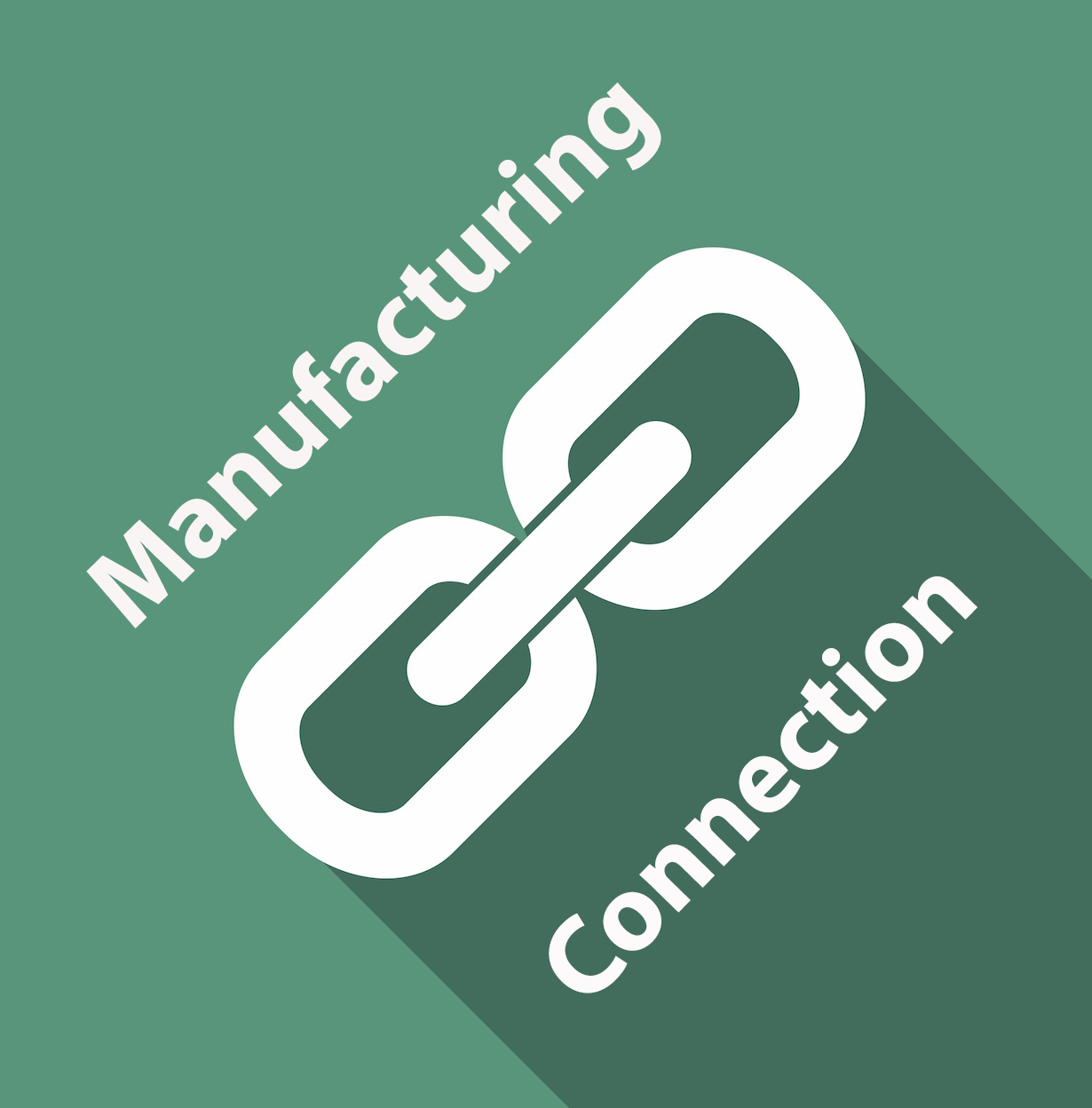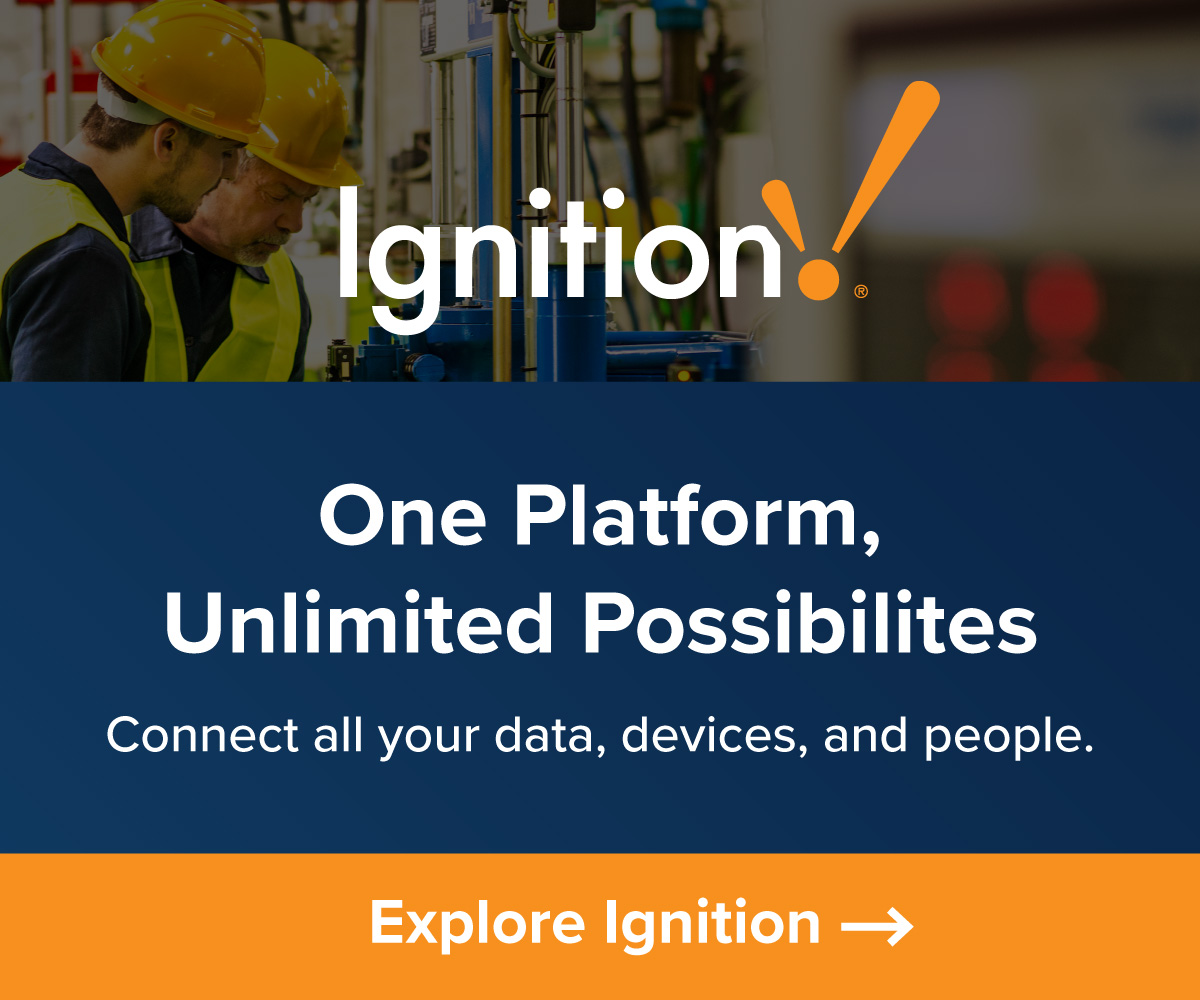
by Gary Mintchell | Feb 21, 2019 | Podcast, Standards
I’ve added a new podcast–184 Standards are Important for Manufacturers. Without standards, shipping by ship, train, and truck would be chaotic. Just so, developing manufacturing standards such as OPC, FDT, EDDL, ISA88, and ISA95 has had great benefit to manufacturers and producers. The Open Process Automation Forum, part of The Open Group, consists of users and developers of technology hoping to build a standard of standards lowering total cost of ownership and total cost of upgrading.

by Gary Mintchell | Dec 10, 2018 | Internet of Things, Security, Standards
Industrial Control Systems Cyber Security Through Trusted Systems
The week following Thanksgiving, I participated in a press tour with Siemens visiting a number of locations in Munich, Germany and following into Nuremberg for a day at SPS/IPC/Drives. I have posted a few things already and you can check out my Twitter stream.
Three weeks of travel plus my wife’s surgery (elective, she’s doing well with Nurse/Cook Gary sort of looking after her) took a toll on catching up with writing and email. Excuses aside, following are some additional thoughts from the trip.
If company executives and engineers cannot trust data coming from the IoT system, then digitalization and its many benefits will not be implemented. It’s in this spirit that Siemens launched the Charter of Trust earlier this year at the at the Munich Security Conference. Since then, several more global companies saw the value of the Charter of Trust, and signed on.
The Charter of Trust then begins with these three goals:
- protecting the data and assets of individuals and businesses;
- preventing damage to people, businesses, and infrastructures;
- building a reliable basis for trust in a connected and digital world.
We were introduced to several companies who have joined the Charter of Trust, visiting their sites, and discussing various aspects of cyber security.
Harry Brian, Business Development Manager, Industry Security Services, Siemens, gave us a Siemens background. “As we see attacks in the wild that are specifically crafted for PLCs and safety systems, no one can ignore the relevance and the urgency,” he told us. In addition, companies also must comply with numerous industrial security regulations and standards all over the world. “Help lies in a concept called defense in depth and is to be found in the IEC 62443 – the standard for IT security for Industrial Automation and Control Systems. Siemens has been addressing the cyber challenge for decades and is employing innovation and technology for anomaly detection and vulnerability monitoring and reporting with MindSphere.”
We stopped at NXP’s office in Munich. NXP has signed on to the Charter of Trust. The first discussion dove into autonomous driving, the convergence of AI and IoT, with Lars Reger, Automotive Chief Technology Officer and Wolfgang Steinbauer, VP, Head of the NXP Innovation Center Crypto and Security.
“The paradigm shift that comes with the convergence of AI and the IoT, will be even greater than the one we have witnessed with the introduction of the personal computer or the mobile phone,” they told us. “Effective security, based on the guiding principles of security and privacy by design, will be crucial to mitigate against the risks that come with it. Cybersecurity and data privacy aspects are paramount to generate trust, particularly so in critical future applications in smart traffic and autonomous driving. People, organizations and entire societies will support this transformation only if the security of their data and networked systems can be ensured.”
The Charter of Trust, they noted, defines what it means to trust along with security levels.
We stopped next in our tour of Munich at TÜV Süd, and a discussion with Andy Schweiger, Cybersecurity section Chief Executive Officer. For Americans not familiar with the organization, it is somewhat analogous to UL.
The news here is that TÜV Süd is developing a cyber security consulting practice and has been on a hiring spree adding to its staff.
The next stop was a tour of the IBM Watson IoT Center. Here IBM brings together developers, consultants, researchers and designers to drive state-of-the-art collaborative innovation with SMEs and start-ups, government, schools and universities and investors.
Speakers stressed the importance of involving governments in industrial cyber security work. Supply chains require careful consideration establishing risk-based rule for protection across all IIoT layers with clearly defined and mandatory requirements. There are many avenues for intrusions. They brought up the case of a hacker getting into a system through a smart lightbulb.
Finally came a tour of Allianz Stadium, home of the Bayern Munich Football Club where Siemens has a strong technology partnership.
The partnership includes energy, building infrastructure, mobility and security.
Fire prevention: Allianz Arena has a maximum protection against fire. Numerous fire detectors and sprinkler heads are located throughout the stadium: 4,600 fire detectors, 1 sprinkler head per 4 visitors (about 140 times more than fire-fighters per inhabitant in a German city), 3 water reservoirs with a total volume of 1,200 m3 in each sprinkler and hydrant centre.
Energy Management: Energy supply (introduction via screen inside the stadium) – new video wall quadruples the energy consumption in comparison to previous video wall. Supply through two transformer stations of the Stadtwerke Munich (municipal utilities) (capacity about 12 MW), peek-capacity on a match-day is about6 MW, which equals the consumption of a smaller town. Plans include a complete microgrid solution by Siemens, from power generation and storage through distribution, including monitoring.
Traffic Control: Siemens solutions (camera-system for the surveillance of traffic routes) around suburban traffic vehicles and traffic telematics ensure that all fans reach the stadium safely and on-time. Siemens traffic management systems regulate the flow of traffic on the motorways near the stadium. Video surveillance: Siemens security concepts and technologies are optimally adapted to the large visitor flow in the Arena. A video system with 90 cameras, records images that can be used by law enforcement.
Every professional soccer stadium has an experienced greenkeeper who cares for the sacred turf. And now, for the first time, the greenkeeper at the Allianz Arena will be assisted by an application. It’s being made possible by MindSphere, the open IoT operating system, and software developers at evosoft. The FC Bayern Greenkeeper App will now assist the greenkeeper and give the grass a voice. Sensors gather data and send it to MindSphere. The MindSphere application then evaluates the data and converts it into action recommendations. Water more. Expose the grass to stronger or longer light. Start the lawn heating or turn it down.These kinds of recommendations require a huge amount of data: light, temperature, humidity, the lawn’s salt content, wind, the chlorophyll content of the blades of grass. All this data is supplied by sensors installed on the field by the Dutch stadium lighting expert SGL, allowing its customers to monitor the lighting of their lawn. Current weather data and forecasts are also fed into the system. The data from the playing field is delivered to the collector box once per minute. MindSphere evaluates the data, formulates action recommendations, and converts both into clear diagrams. The greenkeeper keeps an eye on the turf via a smartphone – and he’s immediately provided with specific action recommendations.

by Gary Mintchell | Nov 23, 2018 | Automation, Networking, Standards, Technology
I will only be at SPS for a few hours this year to check in with old friends and see some of the latest automation goodies. But I’m glad to be there at all. Thank you to Siemens who is sponsoring a press tour that includes a couple of days of intense cybersecurity briefings and workshops.
Oh, and a trip to Allianz Stadium to see the technology and a Bayern Munchen football match.
Some early SPS news:
- Avnu Alliance Demonstrates New Conformance Test Reference Tool
- OPC Foundation promises much news plus addition of Rockwell Automation
OPC Foundation
OPC Foundation has sent a couple of emails inviting us to a press briefing at SPS promising much news. I won’t be in Nuremberg on Tuesday, but I’ll catch up with Stefan and Tom for sure on Wednesday.
The mating dance has ended after a few months. Rockwell Automation has rejoined the OPC Foundation and gained a board seat. OPC Foundation has elected Juergen Weinhofer, vice president of common architecture and technology for Rockwell Automation, to its board of directors. Note that Weinhofer is also the Rockwell delegate to the ODVA board.
Weinhofer’s election to the board extends Rockwell Automation’s engagement in the technical work of the OPC Foundation and its technical advisory council.
“OPC UA has become the dominant open protocol for machine-to-software and machine-to-cloud solutions, and it is becoming critical for companies deploying a Connected Enterprise,” Weinhofer said. “I look forward to helping the OPC Foundation become a leader in machine-to-machine applications and helping OPC UA users unlock more value from their production systems.”
This quote is from the OPC news release. We should note that “Connected Enterprise” (capitalized) is the Rockwell Automation theme. I also note while parsing the comment that Rockwell is still firmly fixed in the factory floor area where Weinhofer specifically states “become a leader in machine-to-machine applications.”
“Rockwell Automation is a proven leader in industry standardization and open information technologies,” said Stefan Hoppe, president of the OPC Foundation. “I welcome not just Juergen’s business and political skills on the board but also the increased technical and commercial contribution that the wider Rockwell Automation team will also bring to the foundation.”
Avnu Alliance
Avnu Alliance, an industry consortium enabling open, standards-based deterministic networking, will exhibit at SPS IPC Drives in the University Stuttgart ISW booth. Avnu Alliance, alongside ISW and Industrial Internet Consortium (IIC), will showcase the role of conformance test plans, testbeds and test reference tools in ensuring an interoperable ecosystem of Time Sensitive Networking (TSN) devices.
“We are in cooperation with IIC, IEEE, IEC and others in creating an interoperable ecosystem through a common network foundation that stems from industry open standards and testing,” said Todd Walter, Avnu Alliance Industrial Segment Chair. “The market will continue to require multiple application layer protocols for networked industrial systems. The Avnu Alliance charter is to enable interoperability at the network layer, to ensure ‘One TSN.’ We are the organization focused on providing TSN test plans and reference test architectures to anyone in the industry that wants to test for TSN compatibility.”
As such, Avnu serves to support Fieldbus organizations by providing its TSN conformance tests and procedures to ensure those organizations’ interoperability in the wider Ethernet system.
Leveraging the industry-defined requirements for TSN network interoperability, Avnu ensures there is a universal set of test plans for conformance to guarantee interoperability at the network layer. Avnu has developed a baseline test plan in the industrial market that ensures industrial devices, whether end device, infrastructure component or silicon, conform to the relevant IEEE standards, as well as the industrial automation profile being defined by IEC/IEEE 60802 Joint Project working group.
Starting with Time Synchronization, or 802.1AS as the foundation for all TSN devices, Avnu released the first set of test plans at SPS IPC Drives in 2017. Avnu will soon publish additional conformance test plans for end devices, such as enhancements for scheduled traffic.
At SPS IPC Drives 2018, Avnu Alliance will show a new proof-of-concept (POC) Conformance Test Reference Design that offers a single, streamlined way for vendors to test TSN interoperability. The POC Conformance Test Reference Design is designed to automatically test TSN devices for compliance to 802.1AS. The demonstration features a Linux open-source test tool created by ISW in partnership with Avnu. This tool would also allow other protocol organizations to test application stacks on top of a TSN network in a streamlined way enabling one-stop certification at any test house.

by Gary Mintchell | Nov 8, 2018 | Internet of Things, Operations Management, Standards
Another group validates standards for industrial communication including FDT and OPC UA.
FDT Group, an independent, international, not-for-profit standards association supporting the evolution of FDT technology (IEC 62453), announced that its Board of Directors voted unanimously to empower the emerging FDT IIoT Server (FITS) architecture with full platform independence. This decision strengthens the FITS architecture to support the diverse array of operating systems to meet industry-driven demands.
In addition to platform independence, key features of the FITS solution include native integration of the OPC Unified Architecture (OPC UA), as well as comprehensive Control and Web Services interfaces. With built-in security protecting valuable information and operating data, the FITS platform will enable cloud, enterprise, on-premise, and a single-user desktop deployment method meeting the needs of the process, hybrid and discrete manufacturing sectors.
“The FITS platform is the ‘game changer’ the automation industry has been anticipating,” said Glenn Schulz, managing director of FDT Group. “I’d like to thank our Architecture and Specification Working Group that worked behind the scenes investigating and prototyping the platform independence feature approved by our board.”
Schulz added, “The Architecture and Specification Working Group has been directed to immediately transition FDT Server Common Components to a pure .NET Core implementation, previously built on the Microsoft .NET Framework. This transition will result in a single FDT Server environment deployable on a Microsoft-, Linux-, or macOS-based operating system, which will empower the intelligent enterprise by bridging the current installed base with next-generation solutions supporting the IIoT and I4.0 era.”
The significant decision and direction allows nearly unlimited deployment and application scenarios. For example, cloud-based FDT Servers can enjoy the performance and cost benefits of a Linux operating system. Traditional control system vendors can offer the FDT Server embedded in their hardware, and machine builders can deploy a small Linux-based FDT Server offering a comprehensive preconfigured asset management system for their skid that can be securely accessed remotely or with smart phones or browsers.
MES applications can also incorporate an FDT Server to gain secure, direct access to production data and asset health and availability metrics through OPC UA. In addition, service providers can wrap services around an FDT Server delivered in an industrial hardened Linux box. The opportunities for cost savings and value creation goes on due to the highly flexible deployment options of the FITS standard.
Because of the security, scalability and the ease of deployment of an FDT Server, the solution will simplify entry into the IIoT marketplace as the only open platform standardized integration architecture providing a single interface with cloud-to-plant floor mobile access. The decision to migrate to platform independence will delay the launch of the FITS specification by approximately six months. With the launch planned for the latter half of 2019, alongside Common Components supporting the FITS standard, automation suppliers and service providers will immediately reap the benefits of a quick development and deployment strategy. Common Components create a library of FDT routines and will simplify compliant development of FITS-based solutions such as Servers, Device Type Managers (DTMs) and APPs.
The final standard will be delivered as three documents: the FDT 2.5 specification, which builds on FDT 2.1 to include HTML5 and JavaScript graphical user interface features; the FITS Web Services Technical Specification, which describes the Web Services interfaces and requirements for an FDT Server; and the OPC UA Annex detailing the OPC UA Server mapping for an FDT Server.

by Gary Mintchell | Nov 5, 2018 | Internet of Things, Manufacturing IT, Standards
OPC UA and TSN (Time Sensitive Network). A marriage I was beginning to think was never going to happen. I wrote a preliminary white paper following Hannover Messe 2017. Yes, more than a year ago. (Check it out by clicking the small ad on the sidebar.) This thing has been like a ball in a Rugby match—kicked, going different directions, downed and picked up. People wanting to move before thinking. Getting caught up in legal issues and “politics.” Postponed press conferences.
And, now…”The OPC Foundation launches an initiative to further enable OPC UA adoption throughout industrial automation by extending standardization and harmonization activities for OPC UA including TSN-enabled Ethernet networks.”
The goal of this initiative is to deliver an open, cohesive approach to implement OPC UA including TSN and associated application profiles. This will advance the OPC Foundation providing vendor independent end-to-end interoperability into field level devices for all relevant industry automation use-cases. The OPC Foundation vision of becoming the worldwide industrial interoperability standard is advanced by integrating field devices and the shop floor.
A new set of working groups will identify, manage and standardize the OPC UA relevant topics focused on industrial automation including,
• harmonization and standardization of application profiles e.g. IO, motion control, safety, system redundancy
• standardization of OPC UA information models for field level devices in offline e.g. device description and online e.g. diagnostics
• mapping of OPC UA application profiles related to real-time operations on ethernet networks including TSN
• definition of certification procedures
The working groups will closely align with the TSN Profile for Industrial Automation (TSN-IA-Profile) which will be standardized by the IEC/IEEE 60802 standardization group. This will help ensure that a single, converged TSN network approach is maintained so that OPC UA can share one common multi-vendor TSN network infrastructure together with other applications.
This initiative integrates well with existing joint working groups engaged in ongoing companion specification e.g. description of machines.
Stefan Hoppe, President of the OPC Foundation said “The benefit of membership in the OPC Foundation allows companies to actively engage and influence the direction of the OPC Foundation and includes early access to the specifications and technology. This initiative will grow OPC UA into new markets and I highly encourage all OPC Foundation members to contact the OPC Foundation to participate”.
Thomas Burke, Strategic Marketing Officer of the OPC Foundation, “We are very excited about the initiative to extend OPC UA including TSN down to the field level, and the number of companies that want to actively participate in this initiative bringing the technology into real world products. This set of working groups will pave the way for the broadest, easiest, and fastest market adoption of OPC UA over TSN.”
The OPC Foundation develops and maintains OPC UA as an open and secure communication platform comprised of an information model framework, communication models and underlying protocol bindings. As such, the OPC Foundation works non-exclusively with other organizations on various OPC UA related topics but continues to operate as a platform, technology, use case, and vendor agnostic standardization body.

by Gary Mintchell | Sep 25, 2018 | Automation, Events, Manufacturing IT, News, Operations Management, Software, Standards, Technology
Two Polish software developers engage in conversation weekly on The Podcast. One wrote the original version of Nozbe the Getting Things Done app I use. Michael Sliwinski talked of using open source software to help him write his app and start his company. His Apple developer Radek Pietruszewski in episode 157 discussed how they wrote a piece of database code they dubbed WatermelonDB and released it into open source on GitHub.
I talk about the benefits of open source as an introduction to things I gleaned from last week’s annual trip to the Sacramento, CA area and the Inductive Automation Ignition Community Conference. Community was the operative word as the gathering of several hundred (I never heard an exact count, but the rumor was there were more than 600) integrators and users crowded into the Harris Center in Folsom for conversation, training, and updates.
On a side note, I’ve been unusually swamped with my annual project of assigning referees to high school and US Soccer youth contests. It seems as if half of the preliminary work I put in assigning before the season were washed away in an unusually wet late summer. Rescheduling is hell. Referees are tired of hearing from me. But I have only 2.5 weeks left in the high school season and two weeks beyond that will close the club season. Then I take a six-month break. Therefore, my energy level for writing has been sapped and the frequency here and on my podcast have suffered.
Founder and CEO Steve Hechtman betrayed his usual laid back demeanor talking about company growth and especially the latest release—Ignition 8—to be released in a few months. I have few details, but developers solved many platform problems caused by integrators pushing the envelop of HMI SCADA software.
Chief Strategy Officer Don Pearson told how the company has always embodied the OT/IT convergence meme with Hechtman coming from an OT background as an integrator and co-developers and now co-directors of software engineering Carl Gould and Colby Clegg were trained in IT technologies.
Pearson began the discussion of open source that continued throughout the conference. While Inductive Automation has always been a proponent of open standards—it still fully supports OPC UA, for example—it is also an open source user and contributor. The technologies strongly promoted at the conference were MQTT (a transport protocol) and Sparkplug (an information carrier in this case used to communicate Ignition tag information from source to consumer). Developer Cirrus Link has placed Sparkplug in the open source Eclipse Foundation.
Speakers talked with assurance about open source, but there was a thread of defensiveness in the discussion, too. Pearson quoted Maeterlinck, “At every crossroad on the way that leads to the future, each progressive spirit is opposed by a thousand men appointed to guard the past.” Eclipse Foundation Executive Director Mike Milinkovich proclaimed, “Software is eating the world, and open source is eating software.”
I like both open source and open standards. They both have propelled industry enabling innovation and limiting lock-in. I remember downloading the first Java JDK in the 90s and trying out the eclipse platform in early 2002. All pretty cool stuff. The Inductive Automation adoption of open source is refreshing in the industry.
Here are a few bullet points from the Carl-Colby show introducing Ignition 8:
- Building on the past, but with a new beginning
- New platform:
- Revamped tag system to reduce memory overload
- New scripting app
- Subscription and data model
- Extensibility
- Dynamic writable UDT parameters
- Deployment architecture, true project inheritance
- Project resource management
- Ignition perspective, new mobile module, built up from ground new
I really should add that while Ignition is very good software, most of the people at the conference told me that they were enticed into the system by the pricing. From the beginning, Inductive Automation decided to upset the software pricing model prevalent in the industry. It is a growing company…
Sepasoft
Inductive had acquired an MES company, integrated with Ignition, and has now spun it off into a separate company run by Tom Hechtman, brother to Steve. Its modular software includes many typical MES applications such as track and trace, workflow, OEE, recipe management, and more. Hechtman discussed a Lean Six Sigma tool kit. He noted the staff has doubled in the nine years since acquisition. It is an ISA 95 and B2MML solution. And also now a MESA International member.
Other notes from the conference
Table top exhibits from the conference sponsors were always packed with curious engineers seeking solutions.
Opto 22’s VP Marketing Benson Hougland told me they can’t build the Groov EPIC PLC fast enough for demand. That product combined with Ignition is a powerful control and SCADA platform—as sales attest.
Albert Rooyakkers, founder/CEO of Bedrock Automation told me that his sub-$1000 controller is selling well. Bedrock specializes in secure and hardened controllers—ideal for power, pipeline, and other such applications. He told me, “Secure SCADA with Ignition is coming.” His key word is secure.






